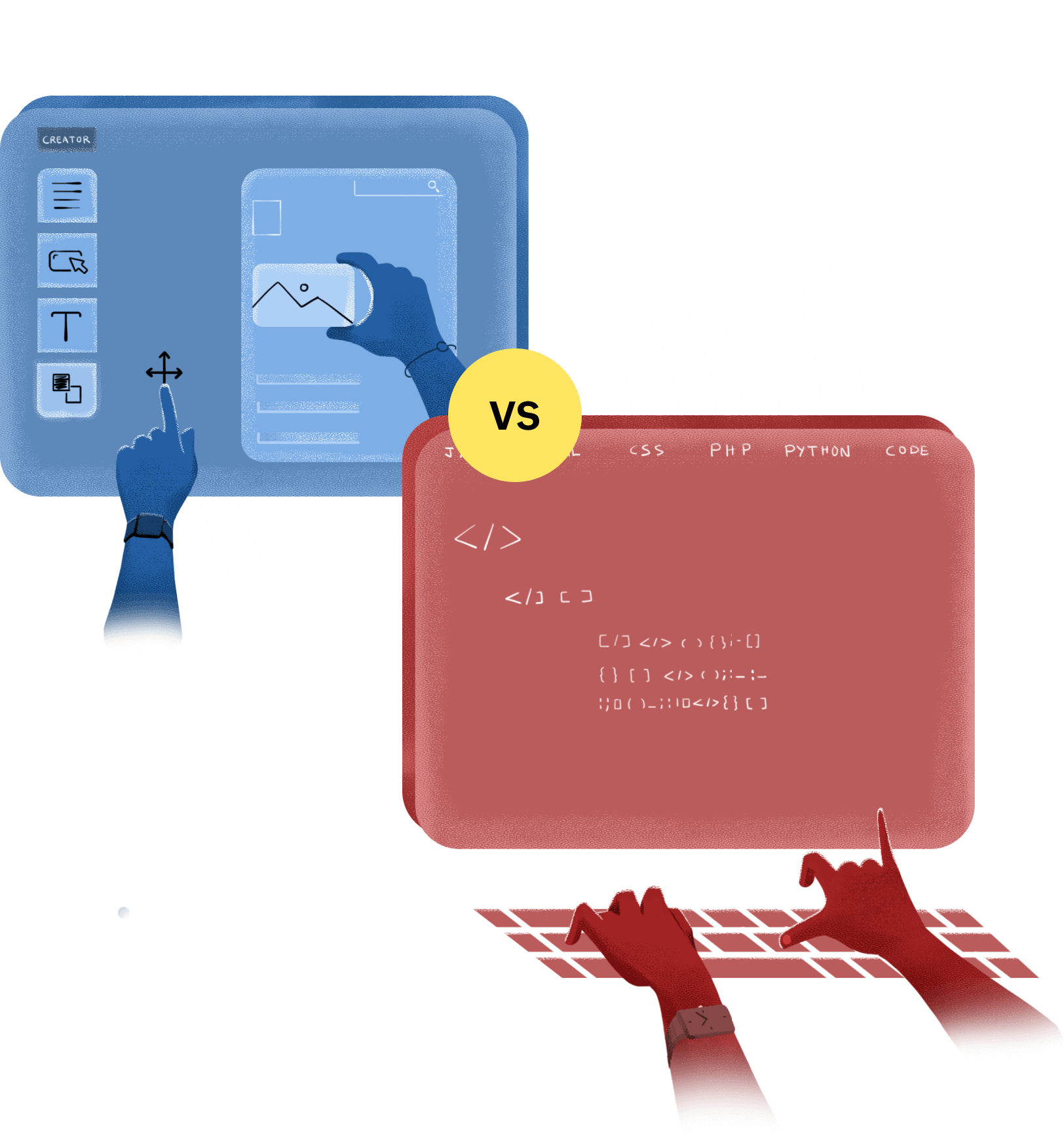What is software development?

Software development is the process of creating software. It is a phenomenon that has revolutionized our lives since its origin in the 1940s. Software development has undergone a sea change over the years:
Initially, programming was done using punch cards and assembly language. These have evolved to C, Java, Python, and now languages such as JavaScript and Rust. Now, there are many programming languages out there, and they vary in complexity.
The most complex programming languages are "low-level" programming languages, which are powerful due to their ability to interact closely with computer hardware. These languages have complex syntax, meaning they don't resemble natural human language and have other rules to code in them.
The easiest complex programming languages are "high-level" programming languages, which often resemble human grammar. These languages tend to lack the ability to interact with computer hardware.
Earlier, waterfall development was the dominant procedural approach to developing software. Now, we have other approaches such as the incremental, spiral, v-shaped, and agile model.

The advent of the app, short for application, has changed the way users interact with technology. Apps are commonly developed for and accessed by mobile devices, and many can take the form of a website on the internet. Each app serves a particular purpose.
Developing apps is now a core effort in software development.
The software development life cycle (SDLC) is the set of steps starting from the conception of the app, to its development, to its eventual deployment, and then maintaining it.
Developing an application means several steps in the SDLC.
Planning
Requirements gathering
Designing and Prototyping
Developing
Testing
Deployment
Maintenance
How is an app developed?
What is the traditional development method?

The first step in traditional software development means choosing a a SDLC methodology. Once you choose the methodology, then comes the big task of selecting the technology stack for developing the software.
Different technology stacks, prevalent in the industry today are the MERN stack, WAMP, LAMP, Python (and its framework Django), Ruby on Rails, and ASP.Net—to name a few.
Developing an app using a stack requires deep expertise in it. It also means hiring specialized developers. It takes at least a couple of years of learning effort to become a specialist in a full stack development platform.
Though traditional development can help you create highly customizable apps, there are other difficulties in developing apps the traditional way.

1 The knowledge barrier
The amount of technical knowledge required to build software is a lot. You need to be a full stack developer or a platform expert. This expertise takes years to acquire. Also, hiring developers proficient in a platform is expensive. There's a large knowledge barrier for deploying industry standard applications and software the traditional way.

2 Time taken while developing apps the traditional way
Typical software development efforts take months, even becoming years-long endeavors at times. This is because of all the inherent steps and stages in developing software. Also, the demand for time investment doesn't end with deployment. After deployment, you need to update the software constantly and fix bugs when you find them in production. It takes a lot of time to develop an app the conventional way.

3 Difficulties in app portability
Today, people access their software on multiple platforms. These platforms include:
The web: Apps hosted on the web and websites that serve a designated purpose
Android: Android smartphones and tablets
iOS devices: Apple's iPhones, iPads, iMacs, and MacBooks
Windows laptops and desktops
Whenever you develop an app via conventional methods, you need to develop it separately for each of these platforms. This is because each platform operates on its own type of software code, being technically different from each other. This takes separate, additional software engineering effort to develop applications for multiple platforms.
In traditional development, every application has to be re-engineered separately for each of the above platforms.
Three challenges faced in traditional application development
The knowledge barrier
Time taken while developing apps the traditional way
Difficulties in application portability
How to overcome the challenges in traditional application development

There are several alternative approaches to traditional application development. The most popular is the rapid application development (RAD) approach. This method stresses the need for separate application development platforms. These platforms remove the complexities in application development, focusing on app logic instead of technical details.
There are several types of RAD platforms based upon their complexity. Among them are low-code and no code platforms. Low-code platforms allow custom scripting to engineer complex logic in an easy way. No code platforms allow you to build applications by providing you with "prebuilt building blocks" of app elements, with no coding whatsoever.

No code is the easiest software development approach out there. Using it, you can develop applications for most common business processes without programming at all. But with no code, there is only a little room for customization. If you go the no code way, you will have to design apps around the constraints of these platforms. There are many constraints, such as the inability to enforce custom logic, change the way your apps look, or develop apps according to your unique business requirements—to name a few.
So what's the answer, what's a good alternative, what gives you a way to overcome challenges in traditional application development and no code platforms?
The solution is low-code platforms. These platforms allow you to engineer applications with minimal coding. You use a visual, drag-and-drop interface to build applications. You can build visually appealing dashboards using prebuilt page elements, which automatically pull data from your applications. If you want to implement custom logic in your apps, you can do that using simple scripting languages that are easy to learn. Some low-code platforms even empower traditional programmers to use drag-and-drop software code snippets to implement complex custom logic.
What is better: Low-code or no code?
Three reasons low-code development is better than traditional development
Empowers everyone to develop
Deploys faster
Offers one-click portability
Let us look into each one of these reasons.
1Empower everyone to develop
A visual interface empowers anyone, regardless of technical expertise, to develop applications. Low-code platforms empower both line of business users and professional developers.
Low-code platforms empower line of business users by:
Empowering them to create apps by simply dragging-and-dropping. No need to know computer programming while using these platforms.
Providing a point-and-click workflow and approval building interface. No need to know scripting to create business process workflows and approvals.
Reducing the dependence on IT teams to create even simple software solutions for everyday business processes.
Professional developers are also empowered by low-code platforms. They can:
Prototype quickly.
Focus more on app logic and app development instead of spending time on the technical aspects of app building
2 Deploy faster
John Rymer of Forrester states that low-code development accelerates application deployment by up to ten times.
Drag-and-drop tools allow you to deploy faster by:
Allowing you to create forms via drag-and-drop to capture user information. This saves time when compared to HTML form scripting.
Providing point-and-click workflow and approval building tools will save time when compared with conventional workflow building using scripting.
Providing you the ability to create visually appealing dashboards by dragging-and-dropping components. No need to design and develop dashboard elements such as gauges, bar charts, and pie charts. Coding these dashboard elements to create visual dashboards using HTML, CSS, and JavaScript takes time. You need hundreds and thousands of lines of code to develop the front-end in traditional development. Using the drag-and-drop interface of low-code platforms, you can build dashboards easily. There is no need to meticulously code user interfaces in these platforms.
Allowing you to drag-and-drop pre-built app code snippets. Yes, some low-code platforms even offer visual code builders!
As the tool-sets offered by low-code platforms invalidate conventional coding efforts in most cases, you can deploy applications much faster. What used to take months will only take hours in low-code development. When using these platforms, you need not reinvent the wheel each time.
3 One-click portability
Earlier, we saw the need to develop apps separately for the web, iOS, and Android. Most low-code platforms allow for one-click deployment of apps to these three types of environments without any additional work.
How is this achieved?
You design and develop your apps on a low-code platform using the drag-and-drop builders. Once finished, you click deploy, and the low-code platform takes care of the rest. The apps will be instantly accessible via the web, iOS, and Android, depending on how you choose to deploy.
One-click portability:
Saves time and development effort.
Saves money.
Allows your employees to focus on translating requirements into apps instead of focusing on platform architecture.
Features
One-click deployment to the web, iOS, and Android
Low-code development
Traditional development
Comments
Most low-code platforms offer one-click deployment. This reduces the time and money spent on porting applications to multiple environments.
Features
Empower people with no technical knowledge to develop apps
Low-code development
Traditional development
Comments
You have to be proficient in programming languages to develop apps in traditional development.
Features
Create forms to capture user information by dragging and dropping pre-built form fields
Low-code development
Traditional development
Comments
In traditional development, you can create forms by scripting using the HTML "form" tag only. In other languages such as JavaScript, it is much more complex.
Features
Create visual dashboards by dragging and dropping elements
Low-code development
Traditional development
Comments
In traditional development, you have to create dashboards by coding the front end using HTML, CSS, JavaScript, and other UI frameworks.
Features
Create approval workflows using point-and-click tools
Low-code development
Traditional development
Comments
In traditional development, you have to script approval workflows using conditional programming logic.
Low-code pros and cons
Low-code platforms, however, do have their own specific pros and cons, some of which are listed below:
Pros:
Faster development:
You can deploy applications 10 times faster than traditional development using low-code platforms.
Empowered line-of-business-users:
Personnel with limited technical expertise can transform their business ideas into apps using low-code platforms.
Reduced dependency on IT:
The dependence on IT teams for software solutions is minimized, allowing them to concentrate on more mission critical tasks.
Lesser costs:
Compared with traditional development approaches, low-code platforms are more economical.
Cons:
Learning curve:
All low-code platforms have a learning curve associated with them.
Vendor lock-in:
For a few vendors, once you subscribe to their low-code platform, you're reliant upon them for updates and support.
Lack of deep customization:
Deep customization is not possible with low-code platforms.
Compliance concerns such as GDPR, CCPA, etc.:
Not all low-code platforms adhere to international & industry privacy and security standards. This is a concern from a security and data integrity perspective.
Choose low-code, choose today
Leverage the power of a low-code platform now and start saving time and money. Empower everyone in your organization to develop apps on their own. Streamline business processes, increase productivity, and improve efficiency. Scale your enterprise seamlessly by choosing low-code today.
DOWNLOAD APPCREATOR
